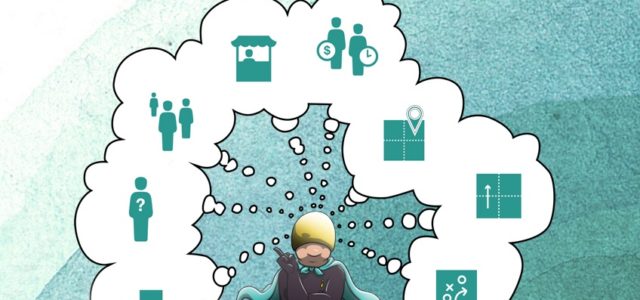Digital divide is a deficiency, a social problem, and a shameful obstacle and a problem of inequality, between distinct social groups, as regards the access, use and impact of ICT technologies, often translating into forms of educational, economic and career disparity.
I am not surprised that it is one of the topics most discussed by sociologists, politicians, and economists precisely by virtue of the many theoretical considerations that it requires, from the many nuances and from the various criticisms. Like all social problems connected between politics-economy-business, the expression digital divide is replaced with alternative names such as digital accessibility, digital skill, media literacy, hoping to find a solution. But, nothing …
Before, it was easy to define the “Digital Divide” by dividing the two large categories of people who had access, with those who did not. In technology literature I often read researches more focused on the analysis of Internet connections, of any kind, treating that of the digital divide as a problem connected to other factors, such as speed and bandwidth, the digital skills of the individual, the activities who see him active and participatory on the web and enhancing the numbers in percentages on the number of people globally who have a connection. And it is precisely here that my disappointment begins, the error is in substance, not in the form. From my point of view, we should study and analyze the problem as social and non-technological. Current American studies replace the concept of digital divide with digital inclusion, where digital inclusion means all those activities aimed at ensuring that all individuals and communities, even the most disadvantaged, have access to and use of the ICT technologies for everyone.
The current problem relating to COVID-19 has demonstrated the scarce technology coverage in all social categories, highlighting an inequality not only in economic and technological terms but also in social terms.
The main activities in practical terms are:
– provide an affordable and in some cases free Internet service;
– make sure that devices with Internet access also become accessible and able to meet everyone’s needs;
- provide educational paths for the use of the Internet and other digital technologies,
- provide quality technical support;
- consider digital applications and environments that reward those who adopt sustainable technologies.
Having access and being able to exploit digital and ICT technologies are actions linked to a series of very vast factors: from geographical and geopolitical ones to those related to age, gender, disposable income, level of education. Obviously a higher income and a higher education level guarantee wide and varied access to the web and its applications, and that people living in more developed urban centres have better access to technologies than rural populations have, and that, from a study done it would seem that Caucasian populations have on average more access to digital environments than non-Caucasian ones.
But in these calculations the “human” factor is always missing, they are the old studies, those taught in economic universities, and that many (too many) times, explain an economy already passed, old and without any common sense currently, in a few words:
if I eat two pieces of bread and my neighbour does not eat at all, the average says that we eat one both, but in the end only one of us is satisfied!!
Well … the studies described above do this, averages over averages over studies, but in the end, the current lockdown has shown that it was not, and will not be the same for everyone, especially for students.
According to Bradley et al. (2012) poverty is the imbalance in the allocation of resources within a given society caused by four main factors:
- Individual deficiency
- Structural failing
- Cultural deficiency
- Capacity/opportunity deficiency
If you notice, the factors listed are exactly the mirror of a digital divide, now exasperated. Currently, there is no perfect “recipe” to overcome the digital divide, but the goal that many shared policies have been given by different states, international organizations, associations and other non-profit entities that deal with Internet governance, is that to decrease the gap that currently exists.
When someone asks me for a solution to this problem, I smile (…no too much), thinking and rethinking an incredible thing. The studies, the research, the analyzes done, always take as a model: the United States, China, and many times India, and every time I think of research I did in university, and a very interesting book read and studied: Poor Economics (2011) by Esther Duflo and Abhijit V. Banerjee, and my friend Phil who recommended it to me, who talked about the problem of people in the world (2.7 bl), living on less than $ 1. Usually described as “the bottom of the pyramid”, every time my smile (…sad) takes me back to consider how little accurate are most of the theories and studies done, thinking that many of those 2.7 bl of people live in the “studied” India, and then at that point the digital divide becomes only the third or fourth or perhaps fifth problem…
At the same time, however, we must try to improve the situation of the Digital Divide by working on four principles that have long been recognized as possible solutions:
- economic equality
- social mobility
- economic growth
- a democratic organization
Equal access to the Network, in the most metaphorical sense of the expression, is configured as a sort of positive externality of equally equal economic and social conditions that is for states to ensure their citizens.
Obviously, it is absolutely important to adopt a series of key principles for the governance of the network, providing younger generations with adequate digital education which should serve to grow good digital citizens and the need to improve media literacy more generally of all sections of the population, with particular reference to minority groups, vulnerable or for which there are particularly critical issues.
Bradley, S W., Mc Mullen, J.S., Artz, K. and Simiyu, E. M. (2012) “Capital Is Not Enough”: Innovation in Developing Economies”, Journal of Management Studies, vol 49, no. 4, pp. 684-717
Duflo, E., 2011. Poor Economics. PublicAffairs.
Article by channel:
Everything you need to know about Digital Transformation
The best articles, news and events direct to your inbox
Read more articles tagged: Featured






